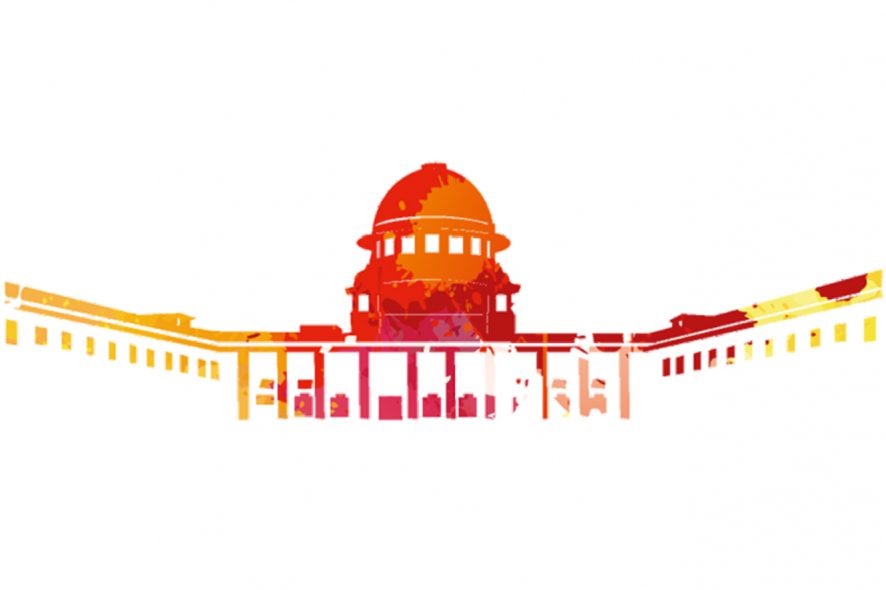Supreme Court: The bench of RF Nariman and Navin Sinha, JJ has, in a landmark verdict, upheld the validity of the Insolvency and Bankruptcy Code, 2016 in it’s entirety as the provisions contained therin pass the constitutional muster.
Noticing that in the working of the Code, the flow of financial resource to the commercial sector in India has increased exponentially as a result of financial debts being repaid, the bench said:
“The defaulter‘s paradise is lost. In its place, the economy‘s rightful position has been regained.”
Object of the Code
The primary focus of the legislation is to ensure revival and continuation of the corporate debtor by protecting the corporate debtor from its own management and from a corporate death by liquidation. The Code is thus a beneficial legislation which puts the corporate debtor back on its feet, not being a mere recovery legislation for creditors. The interests of the corporate debtor have, therefore, been bifurcated and separated from that of its promoters / those who are in management.
Classification between ‘Financial Creditor’ and ‘Operational Creditor’, if discriminatory
The Court elaborated on the distinction between the two and held that:
“preserving the corporate debtor as a going concern, while ensuring maximum recovery for all creditors being the objective of the Code, financial creditors are clearly different from operational creditors and therefore, there is obviously an intelligible differentia between the two which has a direct relation to the objects sought to be achieved by the Code.”
Below are the differences between ‘Financial Creditor’ and ‘Operational Creditor’ as elaborated by the Court:
|
Financial Creditor |
Operational Creditor |
|
most financial creditors, particularly banks and financial institutions, are secured creditors |
most operational creditors are unsecured, payments for goods and services as well as payments to workers not being secured by mortgaged documents and the like |
|
financial creditors generally lend finance on a term loan or for working capital that enables the corporate debtor to either set up and/or operate its business |
contracts with operational creditors are relatable to supply of goods and services in the operation of business.
|
|
financial contracts generally involve large sums of money |
operational contracts have dues whose quantum is generally less.
|
| financial creditors have specified repayment schedules, and defaults entitle financial creditors to recall a loan in totality |
Contracts with operational creditors do not have any such stipulations. |
| financial creditors are, from the very beginning, involved with assessing the viability of the corporate debtor. They can, and therefore do, engage in restructuring of the loan as well as reorganization of the corporate debtor‘s business when there is financial stress |
operational creditors do not and cannot do any of these things |
Validity of Section 29A providing ineligibility of a person to be resolution applicant
“If the blind lead the blind, both shall fall into the ditch”
A person who is unable to service its own debt beyond the grace period, is unfit to be eligible to become a resolution applicant. This policy cannot be found fault with.
Section 53 dealing with distribution of assets not discriminatory
The reason for differentiating between financial debts, which are secured, and operational debts, which are unsecured, is in the relative importance of the two types of debts when it comes to the object sought to be achieved by the Insolvency Code. Repayment of financial debts infuses capital into the economy inasmuch as banks and financial institutions are able, with the money that has been paid back, to further lend such money to other entrepreneurs for their businesses. This rationale creates an intelligible differentia between financial debts and operational debts, which are unsecured, which is directly related to the object sought to be achieved by the Code.
Constitution of Circuit Benches of the National Company Law Appellate Tribunal (NCLAT)
The Court noticed that since the NCLAT, as an appellate court, has a seat only at New Delhi, it has rendered the remedy inefficacious inasmuch as persons would have to travel from Tamil Nadu, Calcutta, and Bombay to New Delhi, whereas earlier, they could have approached the respective High Courts in their States. It, hence, directed the Union of India to set up Circuit Benches of the NCLAT within a period of 6 months from the date of the order.
Conclusion
Noticing that the Insolvency Code is a legislation which deals with economic matters and, in the larger sense, deals with the economy of the country as a whole, the bench said:
“The experiment contained in the Code, judged by the generality of its provisions and not by so called crudities and inequities that have been pointed out by the petitioners, passes constitutional muster. To stay experimentation in things economic is a grave responsibility, and denial of the right to experiment is fraught with serious consequences to the nation.”
[Swiss Ribbons Pvt. Lmt. V. Union of India, 2019 SCC OnLine SC 73, decided on 25.01.2019]








….á ‘paradise lost’ for defaulters –
Does that not prima facie make for rather too npremature a forecast / conclusion ?!
Be that as it may, the ‘çonclusion’ has to be commended to bear on its sleeves the practical wisdom behind the apex court’s judgment !
courtesy